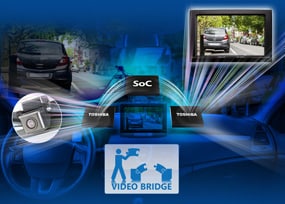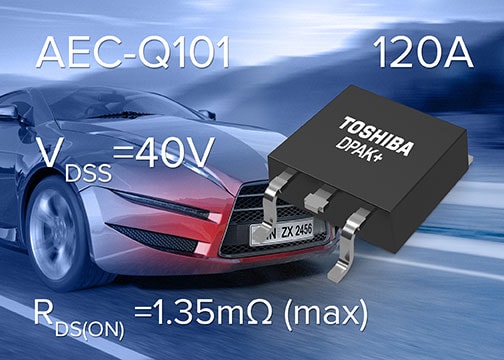- General Top
- SEMICONDUCTOR
- STORAGE
- COMPANY
-
My ToshibaSemicon
- Semiconductor Top
-
ApplicationsAutomotive
Body Electronics
xEV
In-Vehicle Infotainment
Advanced Driver-Assistance Systems (ADAS)
Chassis
IndustrialInfrastructure
BEMS/HEMS
Factory Automation
Commercial Equipment
Consumer/PersonalIoT Equipment
Healthcare
Wearable Device
Mobile
Computer Peripherals
-
ProductsAutomotive Devices
Discrete Semiconductor
Diodes
Transistors
Logic ICs
Analog Devices
Digital Devices
Wireless Devices
※
: Products list (parametric search)
Power SemiconductorsSiC Power Devices
※
: Products list (parametric search)
Isolators/Solid State RelaysPhotocouplers
Digital Isolators
Solid State Relays
Fiber Optic Transmitting Modules
※
: Products list (parametric search)
MOSFETsIGBTs/IEGTsBipolar Transistors※
: Products list (parametric search)
Diodes※
: Products list (parametric search)
MicrocontrollersMotor Driver ICsIntelligent Power ICs※
: Products list (parametric search)
Power Management ICsLinear ICs※
: Products list (parametric search)
General Purpose Logic ICsLinear Image SensorsOther Product ICsOther Product ICs
※
: Products list (parametric search)
-
Design & Development
Design & Development
Innovation Centre
At the Toshiba Innovation Centre we constantly strive to inspire you with our technologies and solutions. Discover how to place us at the heart of your innovations.
-
Knowledge
Knowledge
Highlighted Topics
Further Materials
Other
- Where To Buy
- Part Number & Keyword Search
- Cross Reference Search
- Parametric Search
- Stock Check & Purchase
This webpage doesn't work with Internet Explorer. Please use the latest version of Google Chrome, Microsoft Edge, Mozilla Firefox or Safari.
require 3 characters or more. Search for multiple part numbers fromhere.
The information presented in this cross reference is based on TOSHIBA's selection criteria and should be treated as a suggestion only. Please carefully review the latest versions of all relevant information on the TOSHIBA products, including without limitation data sheets and validate all operating parameters of the TOSHIBA products to ensure that the suggested TOSHIBA products are truly compatible with your design and application.Please note that this cross reference is based on TOSHIBA's estimate of compatibility with other manufacturers' products, based on other manufacturers' published data, at the time the data was collected.TOSHIBA is not responsible for any incorrect or incomplete information. Information is subject to change at any time without notice.
require 3 characters or more.
Enhancing Automobile Audio Networks via Ethernet-AVB

Automotive Ethernet has the capacity needed to support data transfer rates that are orders of magnitude higher than legacy CAN/LIN-based in-vehicle networking protocols. This will be highly advantageous, as new functionality starts to be designed into automobiles and new zonal and central architectures. Numerous sensors and cameras, including sophisticated LiDAR imaging systems, need to be integrated into the new car networking architectures along with audio for the infotainment and communication system. Adoption of Ethernet technology for in-vehicle networking will make it possible for separate cabling for multimedia functions to be dispensed with - leading to space and cost savings. The Ethernet audio video bridging (AVB) extension has been implemented for precisely this reason. This complements the other time sensitive networking (TSN) protocols that are being incorporated to address safety functions.
Thanks to the extensions by AVB/TSN, Ethernet is now able to ensure that deterministic operation is adhered to throughout the vehicle’s multimedia systems. The speakers serving each individual sound zone inside the vehicle cabin (for example) will operate in unison and unwanted sound artefacts will not occur.
To simplify the implementation of AVB audio applications, it helps to have a single small silicon interface chip solution that is capable of meeting the needs of all the connected nodes on the network. Through the introduction of its TC9562 interface ICs, Toshiba is helping to facilitate easy and straight forward AVB audio architecture implementation within vehicles, so car manufacturers can gain traction from such functionality. Each of these AEC-Q100 compliant devices fully supports the IEEE’s 802.1AS precision timing and 802.1Qav data stream queuing protocols - both of which are pivotal to AVB operation and even TSN. They feature a small Arm® Cortex®-M3 processor core and implemented audio hardware for transfers between TDM and Ethernet audio protocols, including an integrated audio-PLL with Media-Clock recovery system. The TC9562 can work as a small standalone interface chip at SoCs and in remote audio units and allows the multimedia nodes in the car’s network to work together for even complex Ethernet-based car-audio systems. If you would like to learn more about AVB audio in an automotive context, why not read Toshiba’s highly informative whitepaper on the subject. It can be downloaded below:



